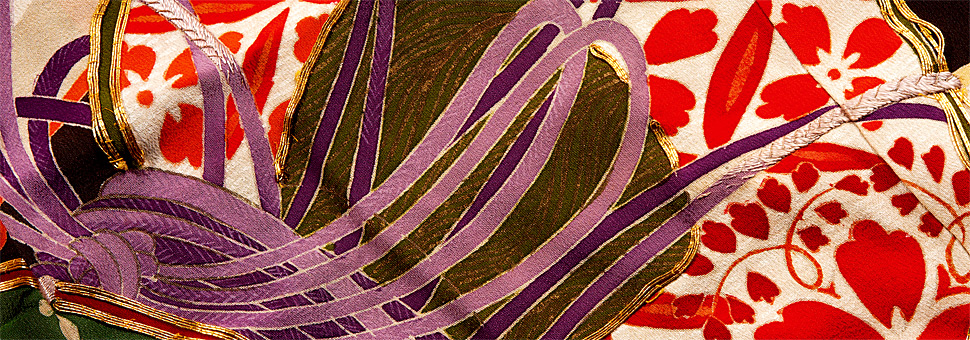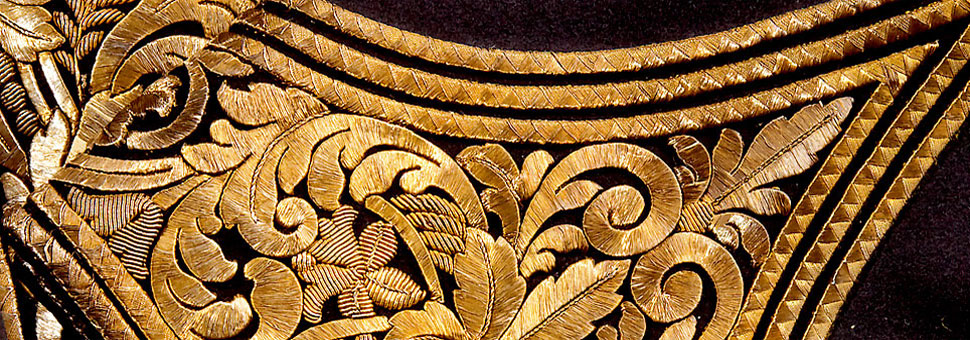We have just been recording a small group of needles and needle cases that in 2023 were donated to the TRC, along with many other objects, by Hennie Stevan-Bathoorn and Sjoerd Stevan, owners of the former Museum voor Naaldkunst, Winschoten, the Netherlands.
The current group that is being catalogued includes some remarkable objects with unexpected associations. They are four, round metal needle cases of a type that I had never seen before. It turns out they were made by one particular firm in London, but the decoration and colour of the cases depended on the company that ordered them. The containers include a series of tubes filled with needles.

Each of the cases is 5.7 x 1.7 (diam.) cm in size and has, in very small letters, the texts: BEST ENGLISH EGGEYED 50 SHARPS STEEL NEEDLES on one round end, and JAHNCKE'S MITRAILLEUSE NEEDLE CASE on the other. The central section is marbled and comes in a variety of colours, such as amber, red and purple and includes the name of a needle company, their location and instructions on how to access the needles, namely by twisting one of the end discs that has a small hole in it and then shaking out a needle.

According to the UK National Archives the company of Ernest Jahncke was founded in 1873 and incorporated in 1893. They were based at Canonbury Works on Dorset Street, Islington (later renamed as Dove Street). The company of Jachncke Ltd made tin metal cases for haberdashery including pin and needle cases. In 1895, Bryant and May, the British matchmakers, acquired an interest in Jahncke and the company started to make metal cases for matches, cigarettes, etc. In addition, a separate French company was established in 1920 under the name of Établissements Jahncke and was based at a factory in the Rue Levert, Paris. The British company of Jahncke Ltd was liquidated in 1963.

The needle cases now in the TRC Collection are believed to have been made between 1890 and 1900. The needle companies mentioned on these needle cases are (a) Kirby, Beard and Co., which was established in 1743 and closed in c. 1950 (TRC 2025.0671); (b) the company of Alfred Shrimpton that was established in 1812, and, by 1914, was a needle manufacturer of hand and machine needles, crochet hooks and pins (TRC 2025.0672), and finally (c) the Lighthouse brand of needle cases sold by Morris & Yeomans Ltd. (TRC 2025.0673 and TRC 2025.0674). All three companies were based in Redditch, Worcestershire, England.

Redditch lies just south of Birmingham and in the 1800s was an international centre for the production of needles, pins and fishing tackle. It is believed that by the end of the 19th century, as many as 90% of all the needles produced in the world came from Redditch and surrounding villages. It is still a centre for the production of top quality needles, but no longer on the scale of the late 19th century.
 Engraving of the Belgian-made Montigny mitrailleuse, mid-19th century.But it was the word ‘Mitrailleuse’ that had me puzzled. What did it mean and how did it relate to needles? It turns out that mitrailleuse is the French term (from mitraille, for 'grapeshot') for a type of machine or volley gun with a cluster of long barrels that could fire rounds in rapid succession or individually. It is evident that the cluster of barrels relate to the series of tubes inside the needle cases.
Engraving of the Belgian-made Montigny mitrailleuse, mid-19th century.But it was the word ‘Mitrailleuse’ that had me puzzled. What did it mean and how did it relate to needles? It turns out that mitrailleuse is the French term (from mitraille, for 'grapeshot') for a type of machine or volley gun with a cluster of long barrels that could fire rounds in rapid succession or individually. It is evident that the cluster of barrels relate to the series of tubes inside the needle cases.
The earliest mitrailleuse gun was invented by a Belgian army captain, called Fafschamps in 1851. It was further developed by the firm of Montigny, Belgium. It led to the production of the more famous American Gatling gun, which was first produced in 1861.
So did Jahncke get the idea of a needle case with multiple needles from a long-barrelled machine gun? It is not a connection I had ever made before!
Gillian Vogelsang-Eastwood, 8 May 2025










